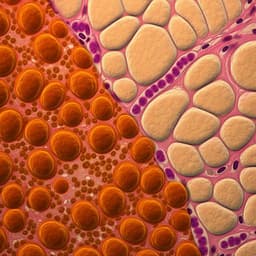
Veterinary Science
The expression signatures in liver and adipose tissue from obese Göttingen Minipigs reveal a predisposition for healthy fat accumulation
S. Cirera, E. Taşöz, et al.
This innovative study explores how Göttingen Minipigs, despite being fed a high-fat, fructose, and cholesterol diet, avoids serious human-like hepatic issues such as hepatocellular ballooning and abundant steatosis. The research team, including Susanna Cirera and Emirhan Taşöz from the University of Copenhagen, discovered a remarkable ability to expand adipose tissue, providing insights into obesity-related metabolic health.
~3 min • Beginner • English
Related Publications
Explore these studies to deepen your understanding of the subject.







